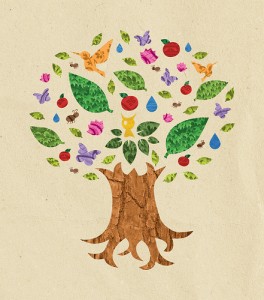 The terms preservation and sustainability are often bound together, but it is important to understand the relationship. When we recognise the scope of sustainability for institutional repositories (IRs) we can see that it must typically precede preservation because the conditions for preservation depend on the sustainability of the target source.
The terms preservation and sustainability are often bound together, but it is important to understand the relationship. When we recognise the scope of sustainability for institutional repositories (IRs) we can see that it must typically precede preservation because the conditions for preservation depend on the sustainability of the target source.
That this is the case for IRs, the focus of the KeepIt project on digital preservation, became evident in a short aside in a new paper by Armbruster and Romary: Comparing Repositories Types: Challenges and Barriers for Subject-Based Repositories, Research Repositories, National Repository Systems and Institutional Repositories in Serving Scholarly Communication.
They classify four different types of repository, one of which is the IR, as the basis for their argument for the type of repository and infrastructure they believe could succeed going forward. At the root of this analysis is the issue of sustainability.
There is a short passage in the paper (p 14) that connects sustainability and preservation: “Long-term preservation and access is an unsolved issue for repositories, but not an urgent one.” I would say that in so far as repositories are managing content deposit and access then they are already supporting preservation, but it’s not a complete preservation solution. It’s that completeness that we are working towards in KeepIt, and to which the authors’ point attaches.
This hinges on the next point, which is more significant: “Repositories must attend to the issue of sustainability as a priority, this being primarily about service, usage and cost.” Preservation is a cost on a repository, and will therefore depend on the degree to which the repository can first demonstrate its sustainability. A repository will not be able to attract the additional funds needed for preservation, in other words for longer-term development and maintenance, unless it first demonstrates the value of the service with regard to its defined purpose and constituency. With growing content and usage comes value.
If I recall, the JISC espida project (“making it happen by getting real”) made the connection between preservation and economics, showing why it can be hard to make the case for preservation when it comes to economic decisions: “digital preservation is a selective preservation of an intangible asset that has a reasonable probability of producing benefits at some future time. In that sense, digital preservation decisions are investment decisions, incurring present costs in expectation of returns in periods beyond the current accounting period” (Hunter 2005). It’s likely, therefore, that decisions concerning preservation will relate to factors that might be more measurable at the time the decision is made, such as whether the content provider or service, in this case an IR, is delivering value for its users within the context of its institutional commitment.
Are there examples of IRs where we could apply this type of thinking? Coincidentally, an appendix to a new JISC project report features two IRs, at Cambridge University and Glasgow University (Birrell et al. 2009). The paper is not about sustainability, and refers to the term only once. Nor is it just about IRs but their integration within digital libraries. The paper is, however, concerned with institutional mission, strategy, integration, resources, staffing, etc., all of which can be considered contributory factors in IR sustainability, and has sufficient detail on these two IRs for a case to be made. As an interesting exercise, based on these case studies, which repository do you believe is more sustainable?
Armbruster and Romary clearly believe that IRs, among the forms of repository they considered, have done least to demonstrate sustainability in the terms they outline. That may be contentious and is not fully justified with reference to other repository types in the paper, nor does it recognise the distinct mission of IRs. For those running IRs, or repositories that might become part of IRs, however, a platform for sustainability, particularly with regard to growing content and usage within defined institutional requirements, is an area that requires attention ahead of a preservation plan.



Redalyc is an online open access library which makes available for its users more than 550 scientific magazines with a total of 119805 wide text articles which can be downloaded, read, criticized and and cited by users.
George, Thanks for your comment. I didn’t immediately connect this with the topic of my blog post, probably because I didn’t know anything about Redalyc. To help readers make up their own minds, here is the link to the Wikipedia entry for Redalyc http://en.wikipedia.org/wiki/Redalyc